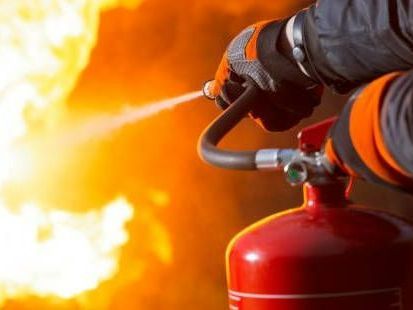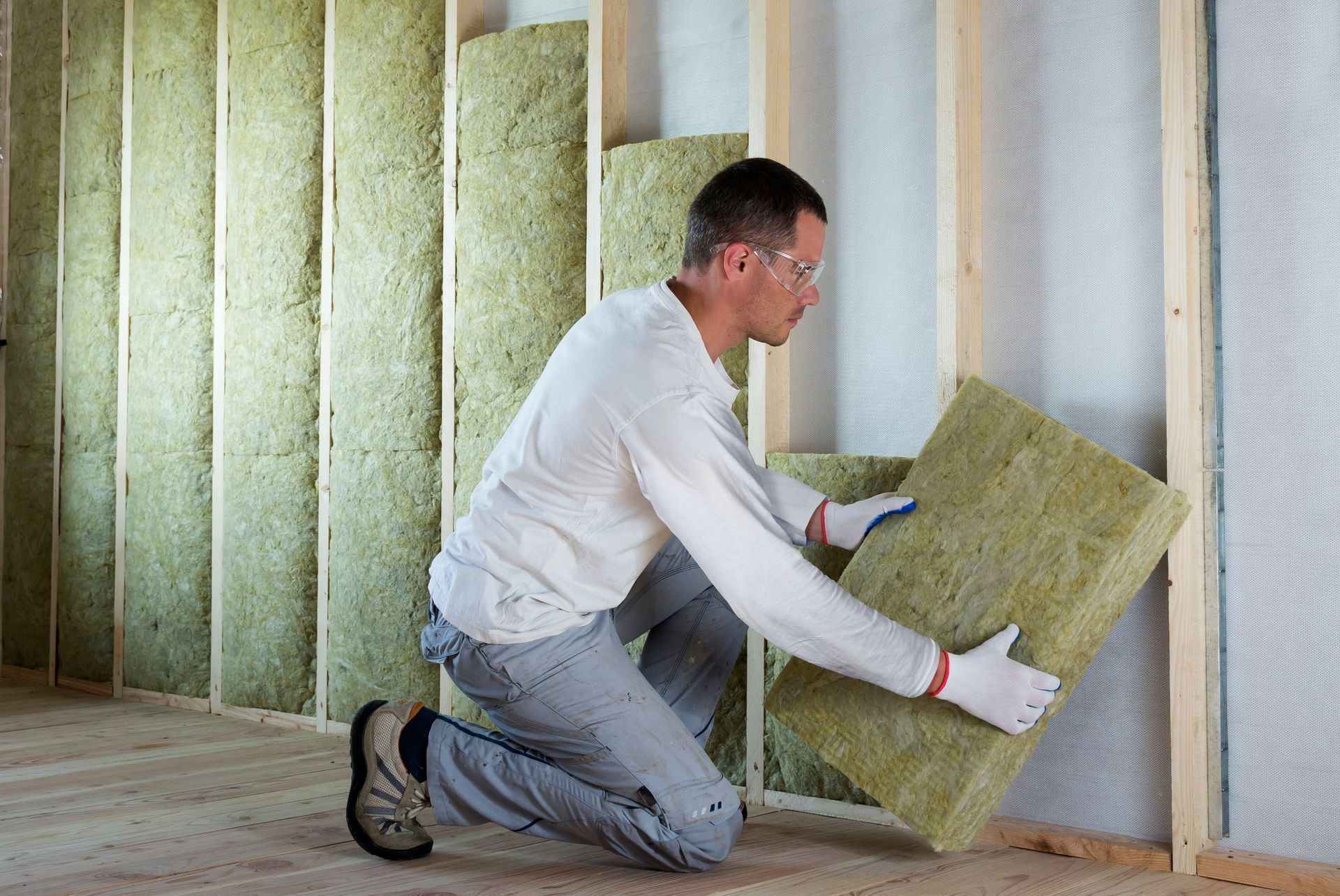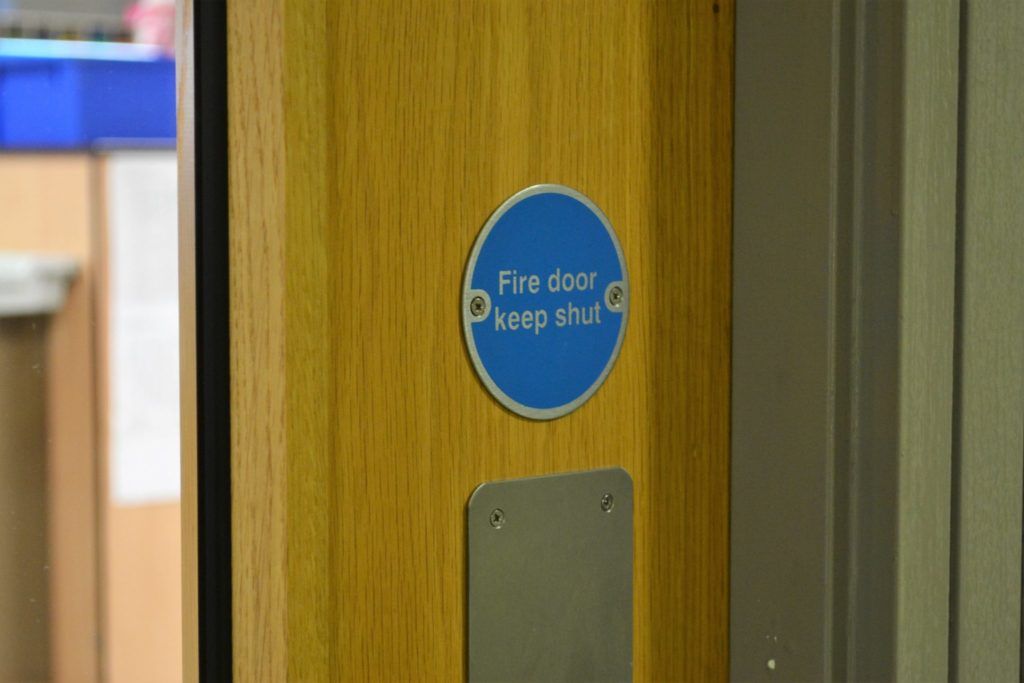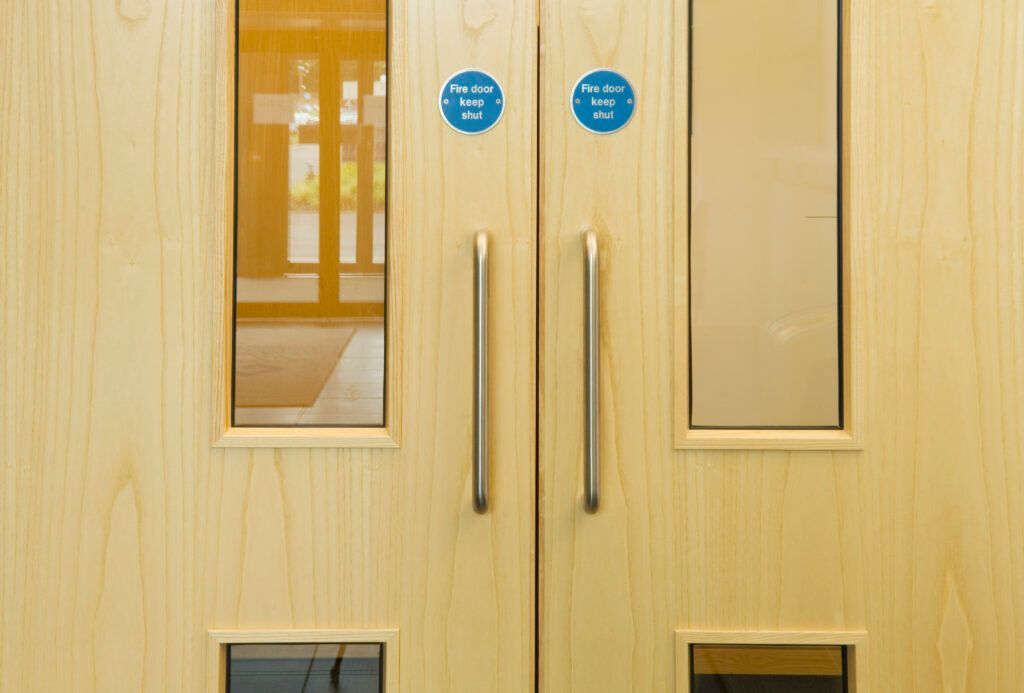Verus Group Blog
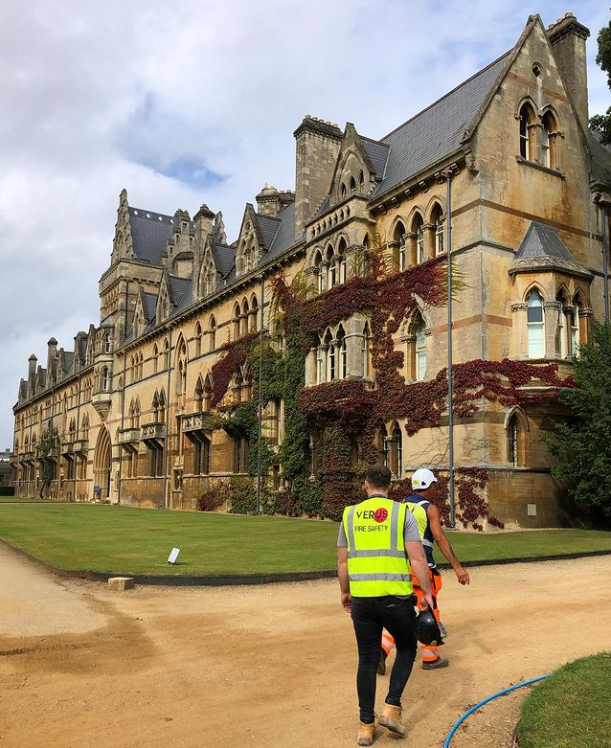
In the period between 2018 – 2021, there were 1,937 fires at educational premises in the UK, 411 of which were recorded as deliberate. The safety of our children is paramount, and nowhere is this more evident than in our schools. These educational institutions serve as the foundation for our children's future, shaping their lives and providing a nurturing environment for growth and learning. Ensuring the safety of students and staff is a top priority, and one critical aspect of this safety is fire stopping . In this blog, we'll discuss the role of compartmentation in schools, highlight the misuse of materials like PU foam , and explore the significance of fire stopping in safeguarding these educational spaces. Compartmentation: Creating Safe Zones Compartmentation is an essential aspect of fire safety across schools and other educational premises. It involves dividing a building into smaller, fire-tight areas which can withstand flames and heat for a specified period, using a combination of tested systems and construction materials. To demonstrate how this works, we have provided an example floor plan at the end of this article, displaying the fire compartmentation design within a block of flats. The benefits of compartmentation include: Delaying Fire Spread: Compartmentation buys valuable time for occupants to evacuate and for first responders to arrive and contain the fire. Limiting Damage: Fire-resistant compartments prevent fires from spreading to other parts of the building, reducing property damage. Minimising Smoke and Toxic Gas Spread: Effective compartmentation helps keep smoke and toxic gases contained, enhancing the chances of a safe evacuation. Fire Stopping: A Crucial Component of School Safety Fire stopping is a major component in supporting effective compartmentation. It specifically relates to the sealing of openings/penetrations, linear gaps, cavities, and dampers, which may be present in a building where services pass from one compartment to another, at meeting edges of walls or ceilings, or within ventilation ducting. A system of fire-resisting or intumescent materials and devices is used in order to obstruct the spread of fire, smoke and toxic gases throughout a building. It's an indispensable element in school safety and plays a pivotal role in providing sufficient time for evacuation in case of a fire outbreak, whilst also offering first responders a safer environment from which to control the situation and save lives. Effective fire stopping within schools can: Protect Lives: The safety of students, teachers, and staff should always be the top priority in schools. Fire stopping measures are essential for preventing the rapid spread of fire, giving everyone in the building more time to evacuate safely. Reduce Property Damage: Fires in schools can result in substantial and costly property damage. Correctly-installed fire stopping can help contain fires to specific areas, minimizing damage and the subsequent cost of repairs. Ensure Continuity of Education: By preventing the rapid spread of fire, fire stopping measures can help maintain the structural integrity of the building, ensuring that the educational institution can continue to serve its primary purpose: providing education. Misuse of PU Foam - A Potential Hazard: Polyurethane (PU) Foam is a versatile material commonly used for various construction and insulation purposes. However, its misuse in the context of fire stopping can have catastrophic consequences. PU Foam is highly flammable and emits toxic gases when ignited. Some of the potential issues with PU Foam in fire stopping applications include: Rapid Combustion: PU foam can catch fire quickly and propagate intense heat and flames, contributing to the rapid spread of fire within a building. Toxic Fumes: When PU foam burns, it releases toxic gases, including carbon monoxide, which can incapacitate and harm individuals trying to escape a fire. Intense smoke: The production of dense smoke as it ignites can drastically reduce visibility, inhibiting an individual's ability to find a safe exit, as well as causing respiratory difficulties. Ineffective Fire Stopping: When used incorrectly or inappropriately, PU foam can undermine the intended fire stopping measures, making it a poor choice for fire containment. In summary, fire stopping and compartmentation are integral components of a school's fire safety strategy, working together to safeguard the lives of students, teachers, and staff while also protecting the institution itself. The misuse of materials like PU foam can have dire consequences, underscoring the importance of adhering to strict fire safety standards. To ensure the safety of our schools, it's essential for educational institutions to invest in the regular inspection and maintenance of built-in fire safety components, and to educate their staff and students about fire safety procedures. By doing so, we can maintain a secure learning environment that protects our future generation and empowers them to thrive. Schools are legally required to conduct organised and methodical Fire Risk Assessments on an annual basis. In addition, the Responsible Person should consider whether a specific compartmentation and fire stopping survey would be advisable in order to identify any breaches which may have occurred during the school's lifetime. If you have any concerns over any of the topics we have discussed in this blog, or about the educational premises you work in/attend, please do not hesitate to contact us.
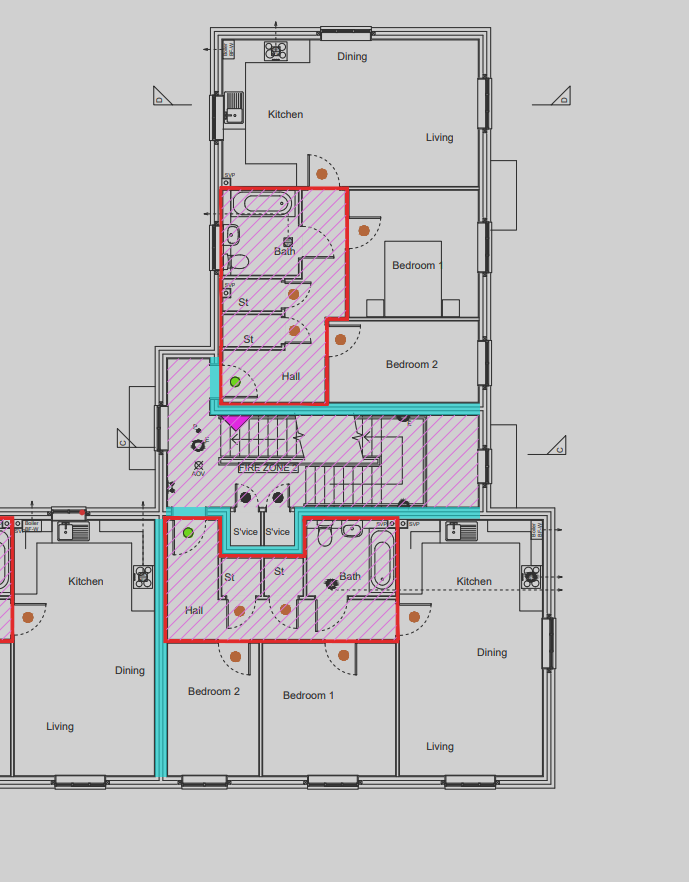
Fire compartmentation is a fundamental concept in building design and safety, with the ultimate goal of protecting life and property. It involves dividing a building into distinct sections or compartments to contain the spread of fire and smoke, preventing it from moving freely throughout the entire structure. In turn, this gives occupants more time to escape, and firefighters the opportunity to control the fire. Importance of Fire Compartmentation: Life Safety: The primary purpose of fire compartmentation is to protect lives. By limiting the fire's ability to spread quickly, occupants have more time to evacuate the building safely, reducing the risk of injury or death. Property Protection: Fire compartmentation not only safeguards lives but also protects property. It helps minimize the damage caused by fires, reducing the economic impact on building owners and insurers. Enhanced Firefighter Safety: Firefighters need time and controlled conditions to extinguish fires effectively. Fire compartmentation provides a more manageable environment, making it safer for first responders to enter and control the blaze. Legal Compliance: Building codes and regulations often require the implementation of fire compartmentation in commercial, industrial, and residential structures. Compliance with these codes is essential for obtaining occupancy permits and insurance coverage. Key Components of Fire Compartmentation: Fire-Resistant Barriers: To achieve compartmentation, buildings are equipped with fire-resistant barriers such as walls, floors, doors, and ceilings. These barriers are constructed using materials that can withstand high temperatures and limit the movement of heat and smoke. Common materials include fire-rated gypsum board, concrete, and fire-resistant glass. Fire Stopping : Fire stopping is a crucial element of fire compartmentation and plays a significant role in ensuring the integrity of fire-resistant barriers and containment systems within buildings. It involves the installation of intumescent or fire-resisting materials and systems to seal penetrations and gaps in fire-rated walls, floors, and ceilings, thus preventing the passage of fire, smoke and hot gases from one compartment to another. Fire Doors: Fire Doors are an integral part of fire compartmentation. They are specially designed doors that will withstand intense heat and flames for a specified duration, providing a reliable exit path for building occupants whilst also preventing the fire from spreading further. Fire Dampers: In buildings with HVAC systems, fire dampers are crucial. These are mechanical devices that can close off or restrict air movement within ducts to prevent the spread of fire and smoke within a building's ventilation system. Whilst fire compartmentation is a crucial element of fire safety, its effectiveness depends on regular inspections and maintenance. Over time, wear and tear, or building alterations, can compromise the integrity of fire-resistant barriers, doors, dampers, and fire stopping. Neglecting maintenance can render the compartmentation systems ineffective, increasing the associated risks in case of a fire. Pictured below is an example floor plan to demonstrate intended compartmentation within a block of apartments. If you would like further information, or if your building requires a Compartmentation Survey , please do not hesitate to contact us.
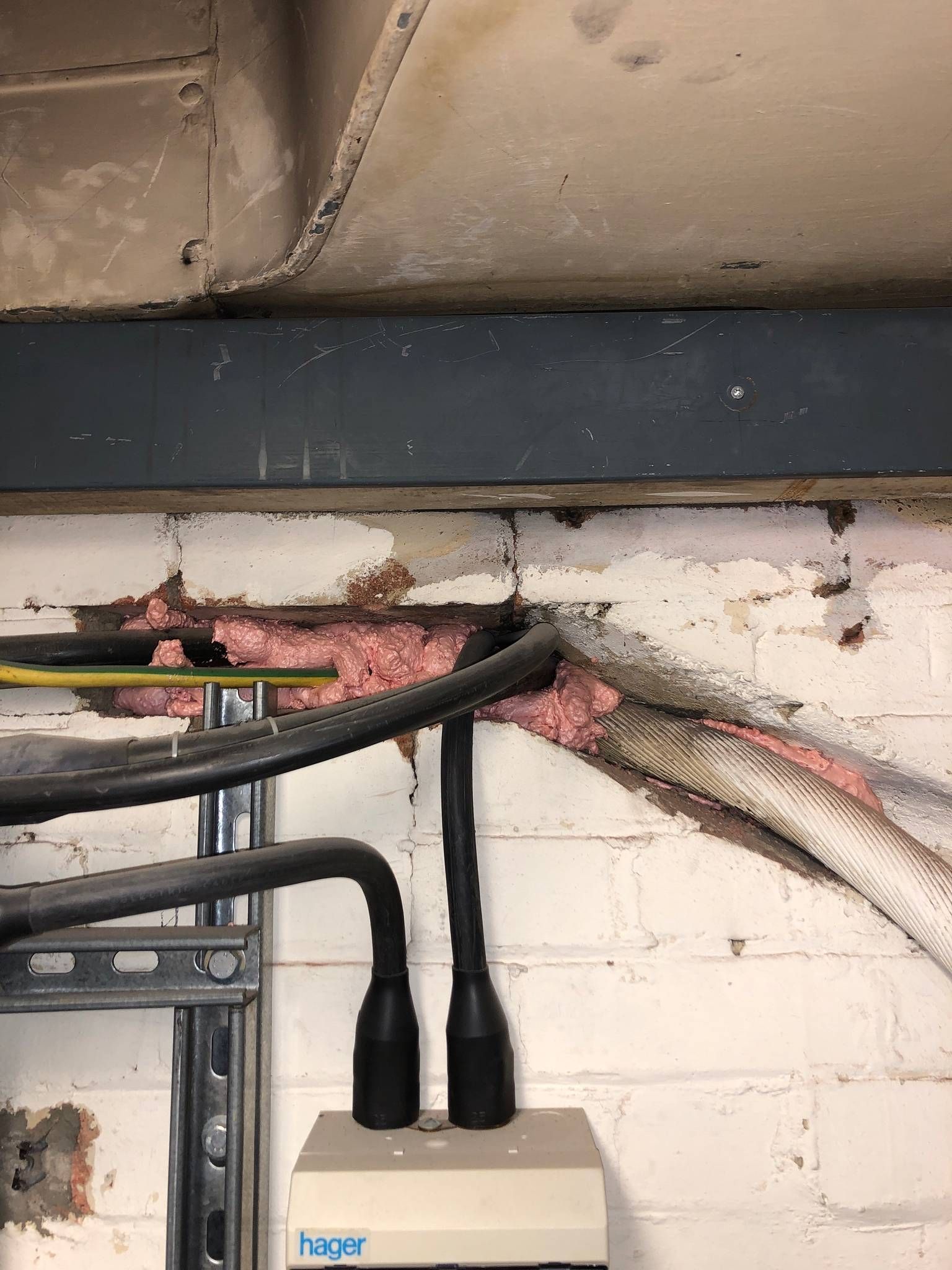
Why is Polyurethane (PU) Foam used? PU Foam, also known as expanding foam, is generally thought of as a cheap and quick-to-use product, and has been widely used in the construction industry filling and sealing gaps and penetrations. The PU foams which are marketed as fire-resisting and sometimes used for "fire stopping" , are usually pink to distinguish from other foams, and are therefore commonly referred to as 'pink foam'. If a competent, third-party accredited contractor was present, however, it is extremely unlikely that they would recommend or use it for fire-stopping purposes. 6 reasons why PU Foam is not suitable for Fire Stopping: Lack of Proper Fire Resistance: Pink expanding foam, despite claiming to be 'fire-rated' on the packaging, often falls short when it comes to providing adequate fire resistance. Whilst is is not considered flammable, it may not have the necessary fire retardant properties and test data across a broad spectrum of scenarios which would be required for effective fire stopping in many instances. Insufficient Smoke Barrier: Fire stopping materials should not only prevent the spread of flames but also act as a barrier against smoke. Pink foam may not possess the necessary properties to effectively contain smoke, which can be equally hazardous during a fire incident. Limited Durability: Fire stopping materials should be able to withstand the rigors of time and maintain their integrity over the long term. Pink foam, however, may degrade or deteriorate over time, compromising its ability to effectively stop the spread of fire. Inadequate Expansion Control: Expanding foam can inflate in an unpredictable manner leading to uneven coverage, sometimes expanding beyond its intended boundaries, or even leaving unnoticed gaps. This can create pathways for fire and smoke to bypass the fire stopping measures, rendering them ineffective. Hazard to Health: Expanding foam can produce toxic fumes that can cause permanent health damage. Compliance Issues: Reputed organisations such as ASFP, BMTRADA, FIRAS, and IFE strongly recommend the removal and replacement of pink foam installations with authentic fire-rated alternatives. The primary concern lies in the difficulty of accurately tracing the product without conducting chemical composition testing. To ensure reliable fire safety measures, it is advisable to opt for fire-rated materials with suitable test data that can be easily identified and verified for their intended use. If you have concerns over the use of pink foam within your building, contact us today for further advice.


